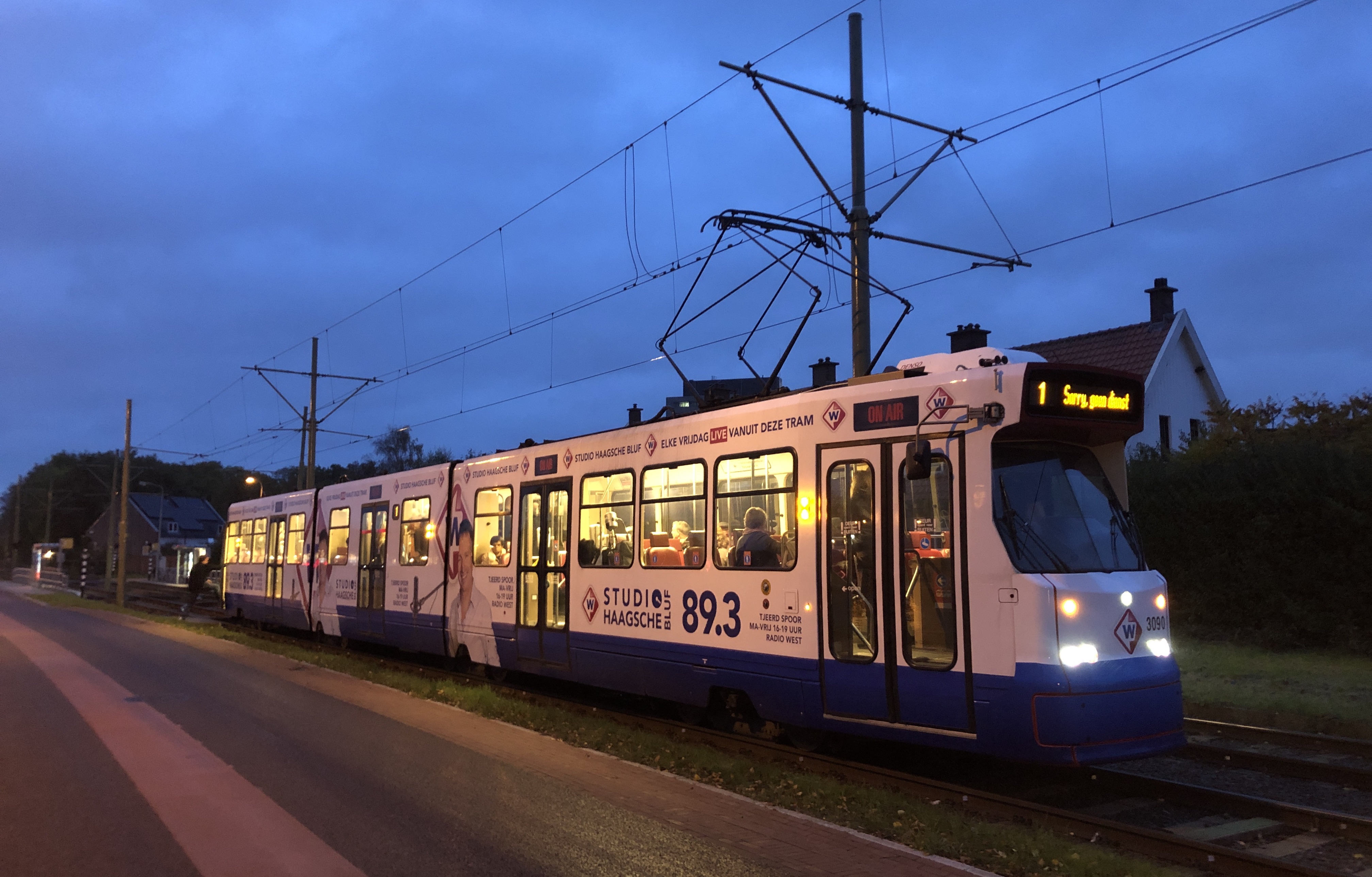▼
It's insane. I already spent nearly 800 euros on bluetooth headphones this year. And then Apple released the Airpods Pro, costing € 279 here in the Netherlands. And I couldn't help myself and bought a pair. So let's see how they compare.
My current bluetooth headphones / earbuds lineup is as follows:
Master & Dynamic MW60. These are big over-ear headphones that are bluetooth and wired.
Plantronics Backbeat Go 410. These are in-ear earbuds that connect to kind of a plastic horse shoe around your neck. This has the advantage that you can take them out and not lose them. (Which I actually had happen with some Jaybirds once.) They can take a wire, but that's pretty messy. And they have noise cancelation.
Jabra Elite 65t. These are "true wireless earbuds": one for each ear. As is usual for this type, they come in a charging case.
Now obviously these three are all very different in obvious ways. But they're also very alike in how the bluetooth works. You can pair them with a bunch of devices, and they'll stay connected to the last two devices. You can then play audio from either of those devices, and you'll hear it. When you stop playback and then start it on the other device, you'll hear audio from the other device. So you don't have to do anything to switch between those devices. However, using them with more than two devices means you have to go into bluetooth settings to reconnect to the headphones/earbuds, which gets old fast. (Although I think on iOS devices you can use a Shortcuts shortcut to make this easier.)
The MW60 has an actual switch to turn them on and off, which is great because it's fast. The others require a long press on one of the buttons. Speaking of buttons, they all have a play/pause/Siri button and volume up/down buttons. You can skip forward and backwards with a long press on the respective volume button.
With the earbuds there can be audio dropouts when I'm using them outside with the iPhone in my pocket, especially if there are no buildings close by.
The Airpods Pro
(Or Airpod Pros or simply APs.) What's really nice about these is that they're easy to put in and take out. You don't have to push them in as much as the other earbuds, I think they get a lot of support from your outer ear. Then again, if you take them out you pretty much have to put them in the charging case, because you can't turn them off. What?? When you do that, they are charged extremely rapidly, which just can't be good for those tiny little batteries.
When you press the button on the back of the charging case you can use the batteries widget in the today view of your iPhone or iPad to see the charge of the APs and the charge case. (When the charge of the left and right Airpods differs by more than 10% they show up separately.) Strangely, the little battery icon next to the headphones icon in the iOS status bar that you get for other bluetooth headphones/earbuds isn't there with the Airpod Pros.
The charge case hooks up to a lightning cable for charging, or you can use a wireless Qi charging pad. Unfortunately, that means you can't press the button to see how far along the charging is, but there's a motion sensor that lights up the LED on the front in you tap the case, which lights up amber when the charge is below 80%, green when above.
Apple has come up with a very nice way of pairing the APs: you simply open the case close to an iPhone (or iPad, I assume) and the iPhone will take it from there. The pairing is then synced to your other devices, including Macs and Apple TVs, using iCloud. Although Apple says you need the latest software to be compatible, all of this worked without trouble on my Macs that still run last year's Mojave. I guess under Catalina you get to turn on/off noise cancelation and transparency mode. You can also pair with non-Apple devices manually. On my iPhone 6 that runs iOS 12, I did that, and interestingly, the iPhone 6 can actually turn on and off noise cancelation through the bluetooth settings.
Noise cancelation
I think especially people who are used to Apple's regular or "amateur" Airpods or similar earbuds that don't create a seal will be blown away by the noise cancelation, as they're used to hearing everything around them. Yes, the active noise cancelation is pretty good, but that only works on lower frequencies. For the high frequencies you need passive noise isolation. And that's something that the half a millimeter of silicone that the tips consist of just don't do very well. Same thing with the Plantronics. So basically all cars turn electric: you don't hear the engine anymore, but the road and wind sounds are still very prominent. Maybe that will get better if/when ComplyFoam comes up with foam tips for the APs.
I compared the passive noise cancelation of the Airpod Pros against that of the Jabra Elite 65t using the noise generator on mynoise.net. The Jabras blocked all the high treble and most of the mid and low treble, with the ComplyFoam tips doing slightly better than the included silicone tips. I then put a Jabra in one ear and an Airpod Pro in the other (with noise cancelation and transparency mode turned off). They both reduce the white noise significantly, but when I turn up the mid or high treble, it sounds like it only comes through on the Airpod side. For anything lower, the sound seems a bit off-center towards the Airpod Pro ear, but not by much.
Then I tried the active noise cancelation with an Airpod Pro in each ear. For the treble it actually seems to get a bit louder when you turn ANC on. The mids get reduced with ANC on and the low mids and anything below that are filtered out by the ANC increasingly effectively.
For now, cycling with a good headwind with cars zooming by is far from ideal: a lot of noise gets through. But the noise cancelation works very well when walking or riding public transit. The transparency mode where you hear outside sound through the microphones is very nice. But it's not new: the Jabras have it, too.
How the Airpods Pro are different form other bluetooth earbuds
The big difference with other current bluetooth headphones/earbuds is that the Airpod Pros won't connect to two devices in the same way. When you take them out of the case, they'll reconnect to the last used device. However, the good thing is that if you want to use them with a different (Apple) device, you simply select them as an audio target. The difference is that you don't have to set up a bluetooth connection first, so this is nice and easy. If you only use your headphones or earbuds with two devices, the behavior of the competition is better, because you don't have to do anything. But if you want to use them with three or more devices, the Apple way is better: yes, you need to tell each device to start using the APs, but that's pretty easy on all of Apple's OSes. The new device will break the bluetooth connection with the previous device if needed. (On old bluetooth headphones you actually had to disconnect from the previous device on that device first...)
On the iPhone I set up a shortcut that selects the APs as the audio target and then starts playing back the current episode in my favorite podcast app. That shortcut then goes in the today view, so it's only a few taps to go back to playing a podcast over the APs after using them with another device.
The APs have no volume buttons. Not a big deal, as I can just use the volume buttons on my iPhone. This also means that skipping forward/backward isn't done with a long press, which makes skipping part of a podcast really slow and thus annoying. Instead, this works the same as with wired earbuds: two clicks to skip forward, three to skip back. Where "click" means giving the stem of either Airpod Pro a quick squeeze. A long squeeze changes the noise cancelation / transparency setting and/or triggers Siri.
My verdict
They are expensive. I worry about the batteries. But they sound very good for earbuds and for wireless. They're comfortable to wear, and integrate well with the Apple ecosystem. It's also really nice that you can use either Airpod by itself while charging the other. They automatically go into transparency mode when you take one out, a really nice touch. With the Jabras, you can use the right one by itself, but not the left one.
In my experience, bluetooth headsets and earbuds are basically consumables: they last two, maybe three years. Of course not everyone listens to audio (mostly podcasts) as much as I do. But if you want wireless convenience, true wireless earbuds are really nice. And to me, an open design makes no sense: you'll be playing audio way too loud to get over all the background noise. Apple's Airpods Pro are a good choice, but if you don't want to spend that kind of money, the competition is certainly not half bad, either.
Permalink - posted 2019-11-26


